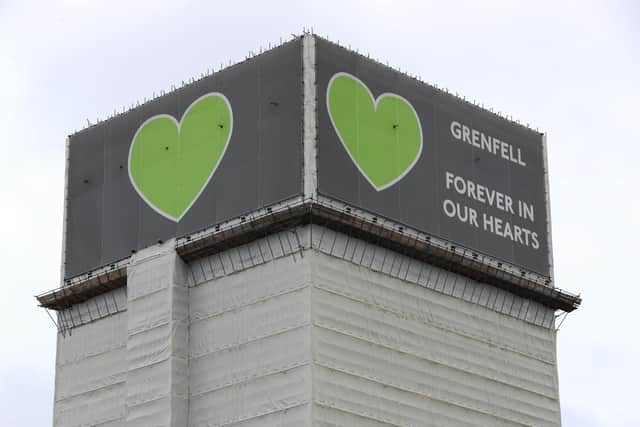House builder Persimmon identifies new buildings needing post-Grenfell upgrades
The company said that after initial assessments it thinks four of the new developments will need only “minimal works”.
It means that Persimmon will not have to pay for so-called remediation works on 80 sites across the country.
Advertisement
Hide AdAdvertisement
Hide AdSo far it has completed work on 36 of these and hopes to have started on the rest by the end of the year.


Persimmon set aside £275m last year in order to support leaseholders in buildings it had constructed to remove combustible cladding.
Similar cladding, which is put on the outside of a building, was widely blamed for the rapid spread of the fire at Grenfell Tower in London in 2017, which killed 72 people.
Developers, including Persimmon, have signed deals with the Government that oblige them to make buildings safer.
Advertisement
Hide AdAdvertisement
Hide AdIt comes as Persimmon reported a nearly 30 per cent fall in revenue to £1.2bn as it sold considerably fewer houses during the first six months of the year. Pre-tax profit fell by around two thirds to £151m.
The business said it had completed 4,249 new homes over the period, a reduction from 6,652 in the same time frame a year ago.
Despite pressure on the housing market, the average price a Persimmon home sold for was £256,445, around £11,000 higher than a year earlier.
“Against a backdrop of higher mortgage rates, the removal of Help to Buy and significant market uncertainty, Persimmon has delivered a robust sales rate excluding bulk sales while growing the private average selling price in our forward order book and also securing cost savings,” said chief executive Dean Finch.
Advertisement
Hide AdAdvertisement
Hide Ad“We are on track to deliver profit expectations for the year and are building a platform for future growth.”
Richard Hunter, Head of Markets at interactive investor, commented: “By any yardstick, these numbers do not make pleasant reading as Persimmon continues to swim against a particularly harsh tide.
"The litany of headwinds shows no signs of abating, as the sector faces the combined challenges of lower mortgage availability and affordability, stubborn build cost inflation, interest rate hikes which have almost certainly yet to peak and inevitably less buying interest.
"Margins have also suffered given the effects of lower volumes, increased marketing costs and build costs which has not been enough to offset a modest increase in average selling prices.”
Advertisement
Hide AdAdvertisement
Hide AdMr Hunter added: “The removal of the Help to Buy scheme has had a particular impact on first time buyers, an area to which Persimmon has had a traditionally higher exposure.
"The general bureaucracy of the planning process is another headwind, while the lower sales rate and indeed forward order book imply that the current raft of pressures are likely to persist for some time to come.”
"Set against this parlous backdrop, Persimmon has been working hard to assert some influence on the factors within its control. The introduction of incentives and a part exchange scheme have shown some signs of mitigating the wider malaise, while the group continues to acquire new land opportunities on what it describes as an exceptional basis.”